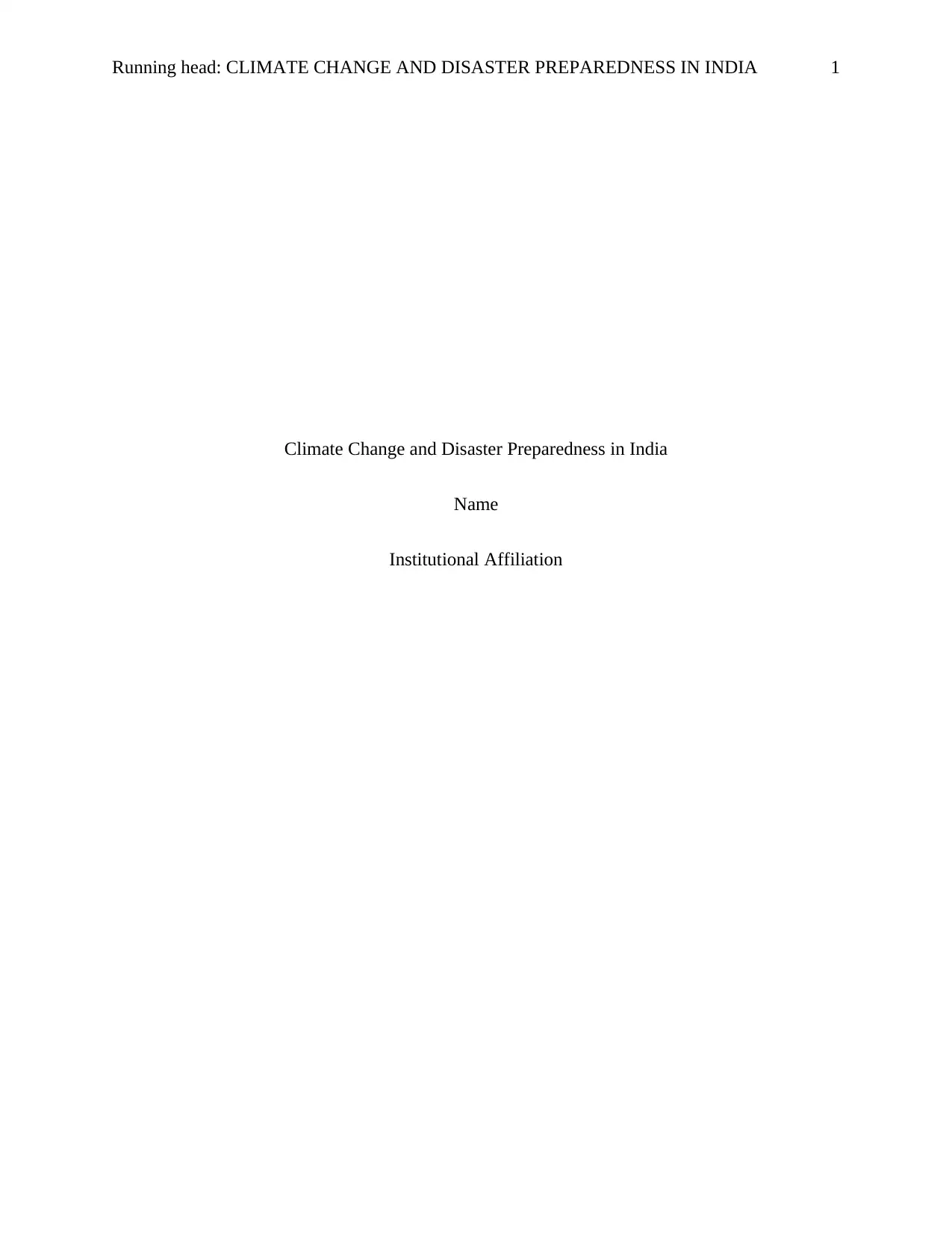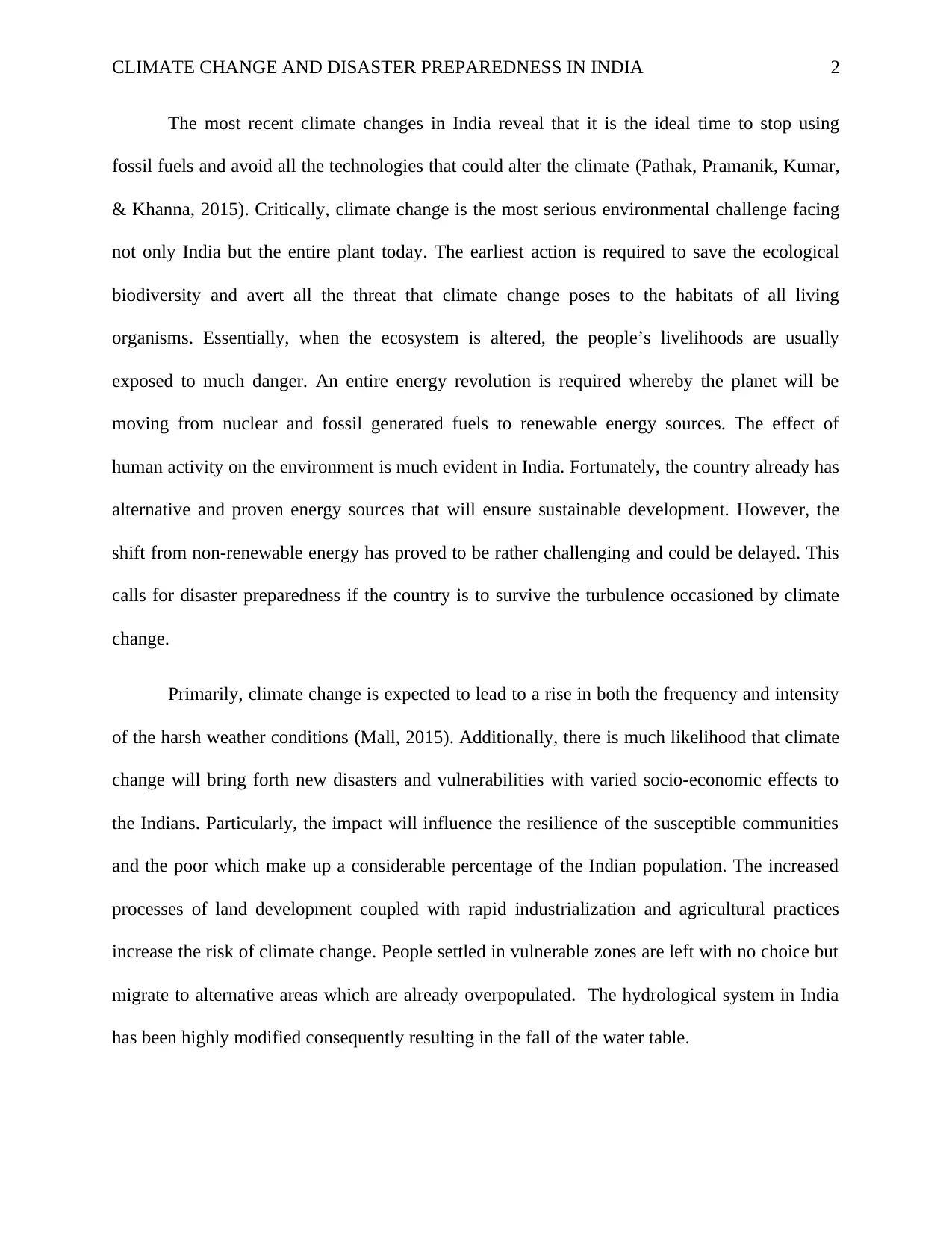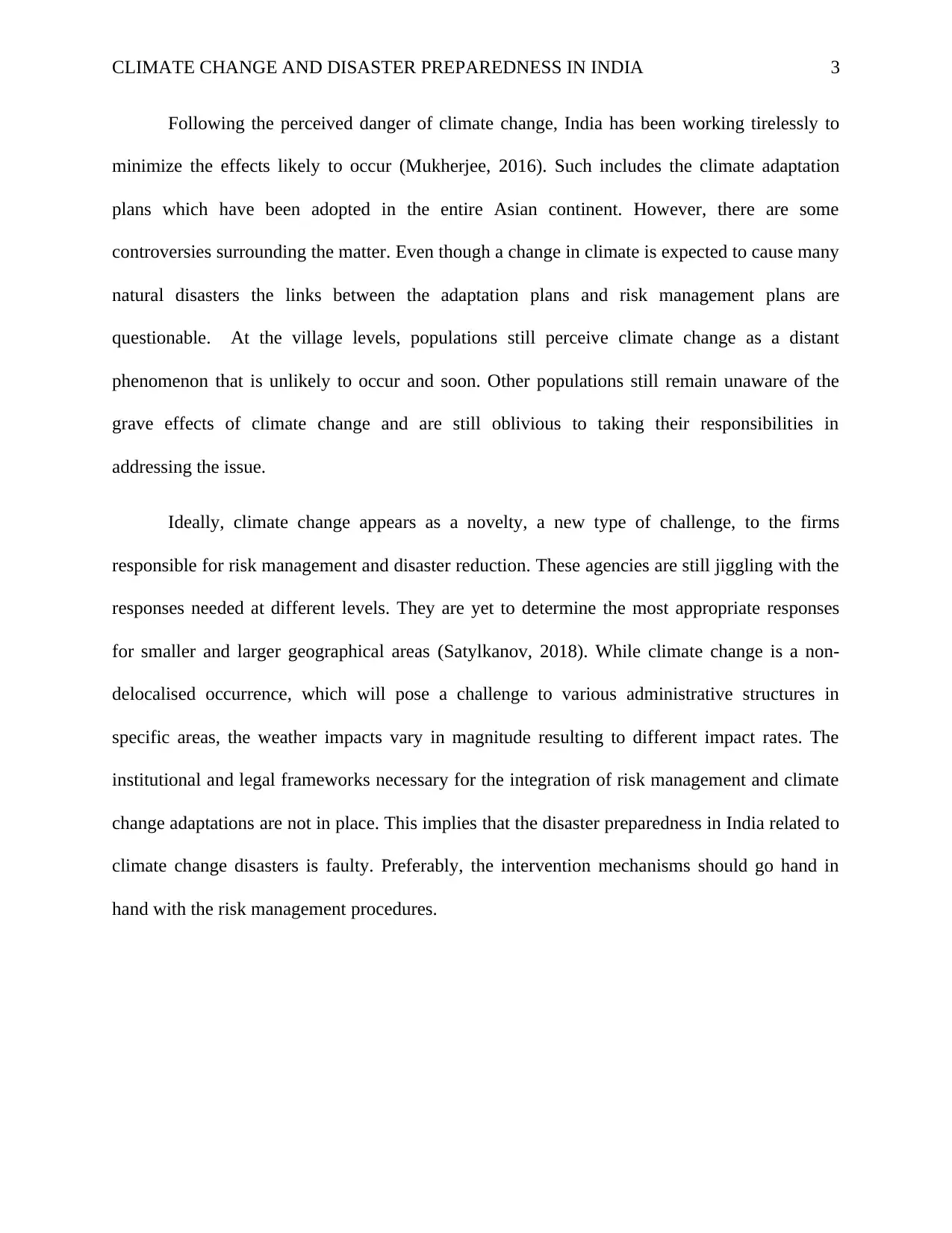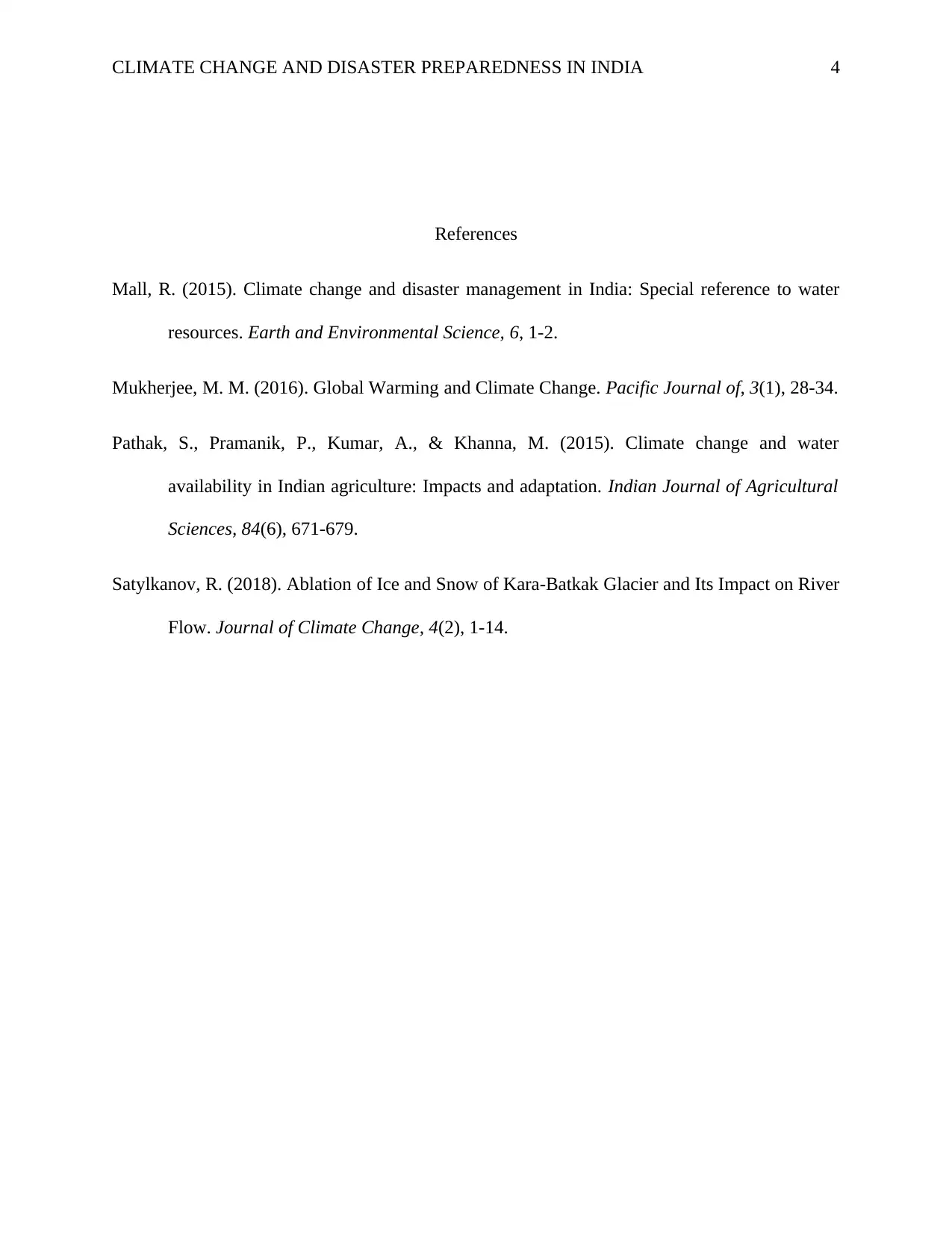Evaluating Disaster Preparedness: Climate Change Effects on India
VerifiedAdded on 2023/05/30
|4
|788
|198
Essay
AI Summary
This essay examines the impact of climate change on India and the country's disaster preparedness measures. It highlights the urgent need to shift from fossil fuels to renewable energy sources to mitigate the effects of climate change, which are expected to increase the frequency and intensity of harsh weather conditions. The essay also addresses the challenges in linking climate adaptation plans with risk management strategies at the village level, where awareness and responsibility are lacking. It further points out the institutional and legal framework gaps that hinder effective integration of risk management and climate change adaptations, suggesting that intervention mechanisms should align with risk management procedures. The study references various works emphasizing the importance of addressing climate change for sustainable development and disaster risk reduction in India. Desklib offers more resources for students.
1 out of 4





![[object Object]](/_next/static/media/star-bottom.7253800d.svg)